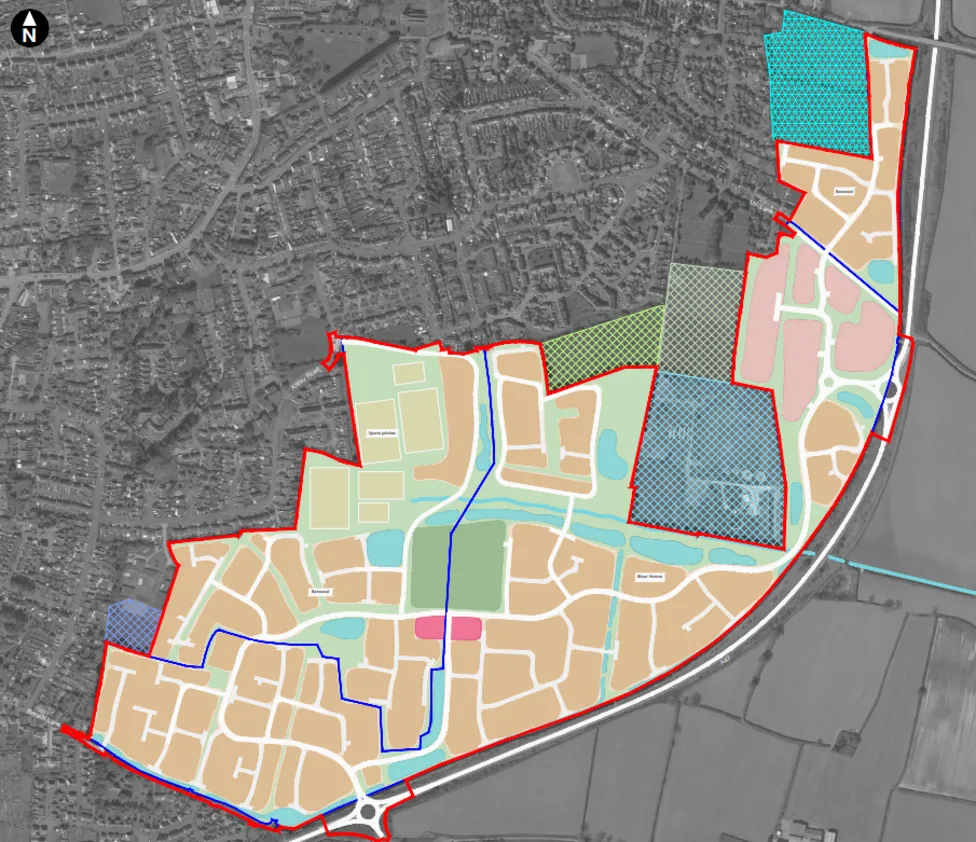
A significant housing development project in Earl Shilton, has been given the green light, despite strong opposition and last-minute calls to delay the decision. The approval was granted for two planning applications submitted by Bloor Homes, Jelson Homes, and Barwood Land to Hinckley and Bosworth Borough Council, paving the way for the creation of a massive housing estate comprising 1,500 homes off Mill Lane.
Warehouse Proximity Concerns
Central to the controversy are concerns regarding the proximity of employment land within the development to existing residential areas and a local cemetery. Objectors and local ward councillors voiced fears that the project could result in 12-meter-high warehouses being constructed just one meter away from people’s homes and the cemetery. Such a scenario, they argued, would be detrimental to the community’s quality of life and disrespectful to grieving families.
Sam Wilgress, a logistics developer opposing the plans, emphasized the potential negative impact on residents of Union Mill Close, stating: “One meter from the boundary of residential housing and adjacent to a cemetery with grieving families is unacceptable.” He advocated for a postponement of the decision to allow for a thorough assessment of the operational effects of the proposed development.
Calls for Larger Buffers
Ward councillors Claire Allen and Richard Allen echoed these sentiments, calling for a 30-meter landscape buffer to be implemented between the proposed industrial units and sensitive locations such as homes and the cemetery. Claire Allen acknowledged the necessity of new homes but stressed the importance of getting the development right for existing residents: “It is imperative we get this right for residents. I don’t want to be faced with a situation where there are grieving families and funerals next to industrial units.”
Council’s Response
Despite these concerns, the council’s head of planning, Chris Brown, refuted the claims about the proximity of the warehouses, asserting that the plans do not indicate buildings within one meter of residential properties. He added that any deferral would not advance the situation, as the council felt the application was ready for committee consideration.
Councillor Stuart Bray expressed sympathy for the residents’ concerns and assured them that appropriate screening and buffers would be scrutinized in subsequent planning stages. He acknowledged the broader context of national housing requirements, indicating that the council has limited flexibility in denying such developments due to government mandates to provide thousands of houses in the borough over the coming years.
Approval and Contributions
The applications received majority support from the council members, with one application passing with 10 votes in favor and the other with 11, while both had three votes against and two abstentions. The approved plans include not just residential areas but also a new school, community hub, and retail space. The developers have committed nearly £22 million towards local services and facilities, including £18 million for education, £1.1 million for healthcare, and £1.3 million for improvements to the Weavers Springs sports fields.
Neil Ball, the planning director at WSP, representing the developers, highlighted their commitment to enhancing local infrastructure. This includes contributions towards “travel options at Desford crossroads” and potential funding to reinstate the scrapped number 1 bus service.
Mixed Reactions from Councillors
The decision drew mixed reactions from councillors. Councillor Keith Lynch reminisced about a time when such proposals would have been dismissed, but acknowledged the present realities: “Wouldn’t it be lovely to say those are green fields and they’re staying green fields? But the world as it is is not as we wish it to be. Here at least there is reasonable gain, there is reasonable possibility of actually planning something that will be of benefit.”
The council’s decision underscores the tension between development pressures and community concerns. As detailed planning applications move forward, the council will face the challenge of balancing these interests to ensure the development benefits the broader community while addressing the legitimate worries of existing residents.



